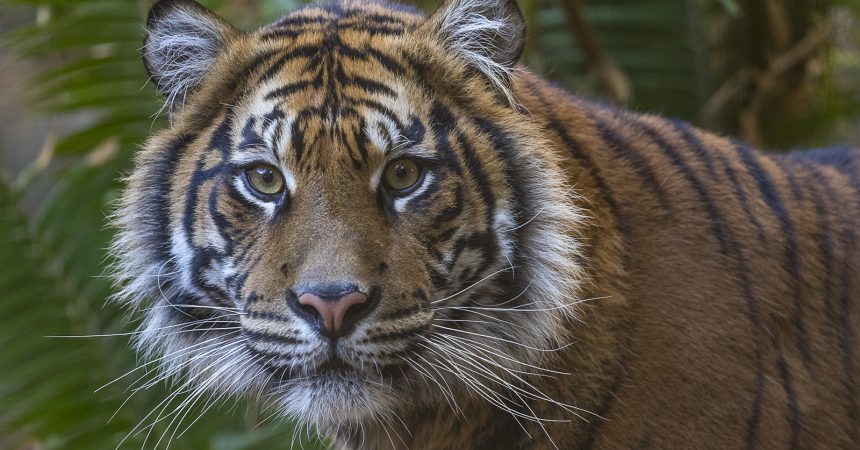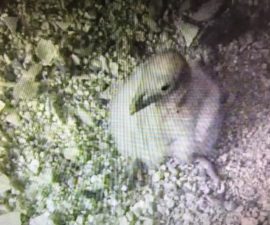Get ready for Global Tiger Day 2018 on Sunday, July 29, 2018; join us at the Safari Park (or on our Tiger Cam) to celebrate these endangered charismatic big cats!
Stroll to Tull Family Tiger Trail, where our nine Sumatran tigers will enjoy special enrichment releases—mesmerizing to watch! Visitors can get to know the cats better through keeper talks, training demonstrations, and conservation displays throughout the day. To get you in a tiger frame of mind, here are updates about the “streak” of tigers at the Park.
Moka, the illegally trafficked Bengal tiger cub rescued from the Mexican border and nurtured at the Safari Park, has relocated to Lions, Tigers, and Bears (LTB), a sanctuary in Alpine, CA. However, since Moka was bred in Mexico and has indeterminate parentage and genetics, he will not breed and was neutered before his move. Moka’s new caregivers report that he continues to grow by leaps and bounds, and has a new friend and “housemate”: Nola, an illegally trafficked white tiger cub LTB rescued. The pair of youngsters spend most of their time swimming and wrestling—sometimes at the same time!
Moka’s cohort Rakan, the hand-raised tiger cub from the National Zoo, is settling in to his new role at the Safari Park as a solitary tiger. Although being solitary has been an adjustment, Rakan “howdies”—greets and interacts through a mesh barrier—with other tigers every day. Currently, his favorite companions are Suka, Nelson, and Langka. Rakan has also been exploring all three exhibits and relishing all of the carcass items, training sessions, and new enrichment he’s been getting from his keepers. We’ve been spoiling him!
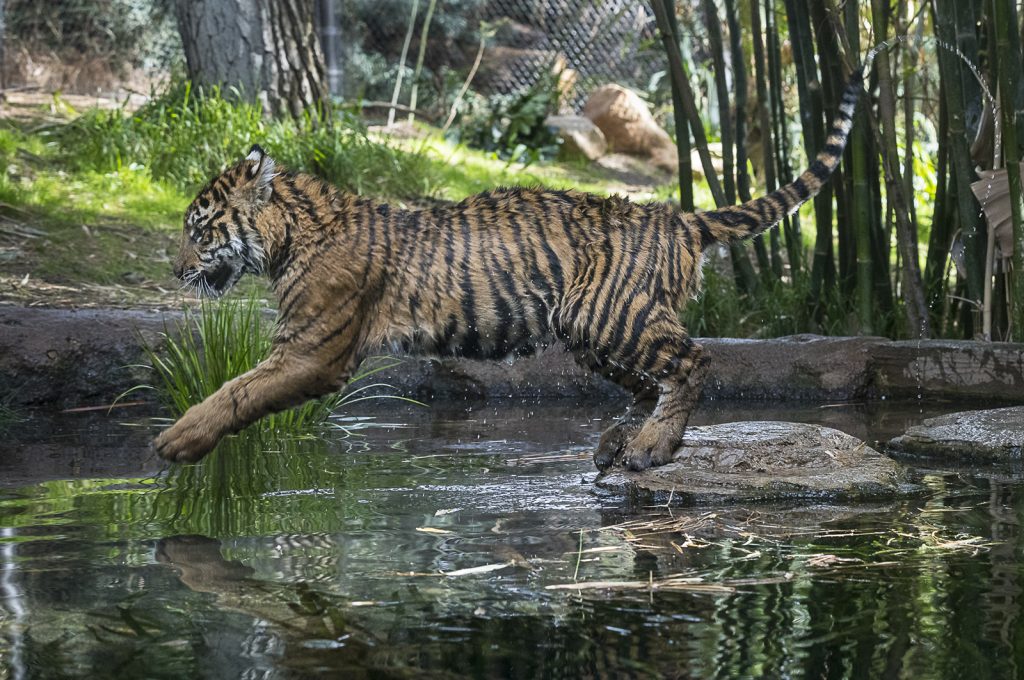
Rakan, romping with the energy and adventurous spirit of youth.
Sadly,Tiger Trail’s matriarch, Delta, was euthanized this year shortly after her 20th birthday. Born May 26, 1998, she came to the Safari Park in 1999. Throughout her life here, Delta was an active member of the Sumatran tiger Species Survival Plan (SSP), contributing to the survival of her subspecies by producing four litters, totaling ten cubs. Her cubs grew and went on to other institutions to produce cubs of their own, giving Delta 18 grand-cubs. Delta’s legacy is extensive. In fact, of the 78 Sumatran tigers currently in the SSP in the United States, 36 percent are Delta’s progeny! Even though she had such a long, successful life at the Safari Park, her caregivers and fans miss her greatly.
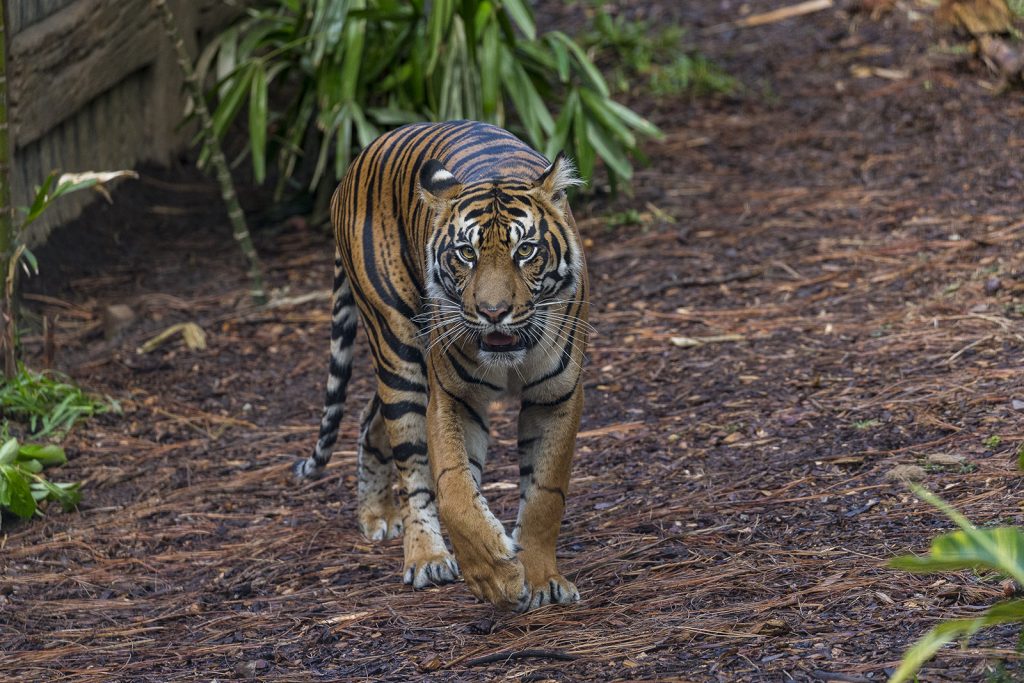
Joanne
Delta is survived at the Safari Park by her daughters, Joanne and Majel. Since she separated from her last litter, Joanne has been living as a solitary, territorial female—the natural state of being for a tiger. She enjoys complex training sessions, lavender-scented pallet liners, and daily howdies with Langka and Teddy. Although keepers are seeing cyclical estrus signs from Joanne, she and Teddy do not have an SSP breeding recommendation for this year since they were so successful the last couple of years.
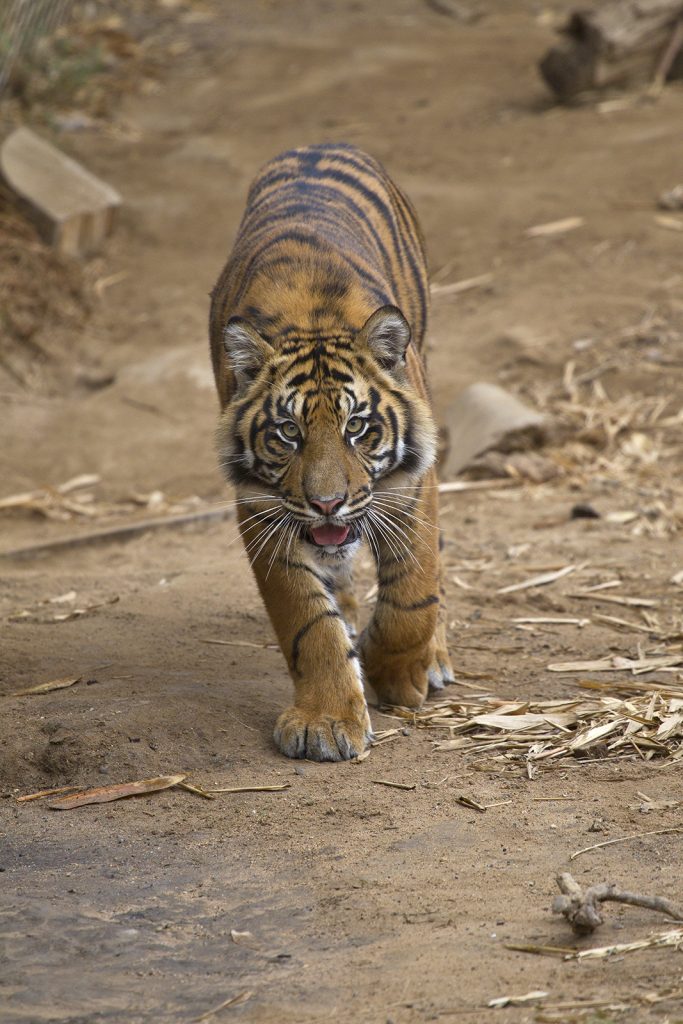
Majel
Majel, on the other hand, continues to have a breeding recommendation with Langka. However, with nine tigers currently residing at Tiger Trail (currently the largest population of Sumatran tigers in North America), space is at a premium. Breeding introductions for Majel and Langka will resume once a few other tigers move to other institutions. In the meantime, Majel is learning new behaviors during training sessions and enjoys shank bones.
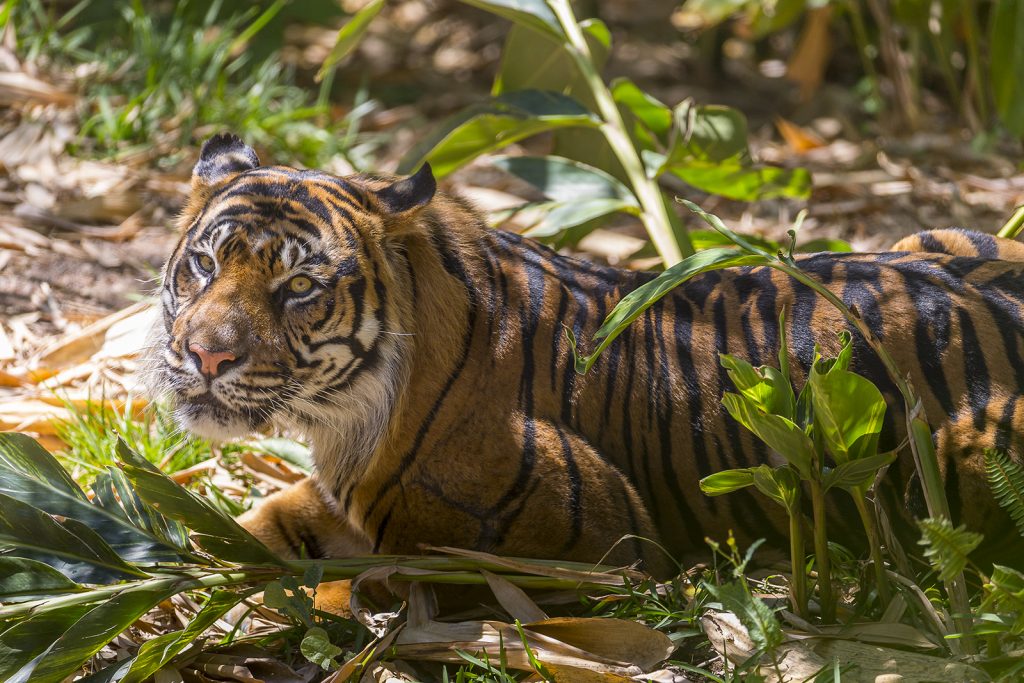
Langka
Langka is one of the more tentative cats at Tiger Trail. Although he and Teddy jockey for the title of biggest tiger, Langka seems to need regular reminding that he is an apex predator. New situations often make him anxious, but he enjoys his daily howdies with Majel and scented water tubs.
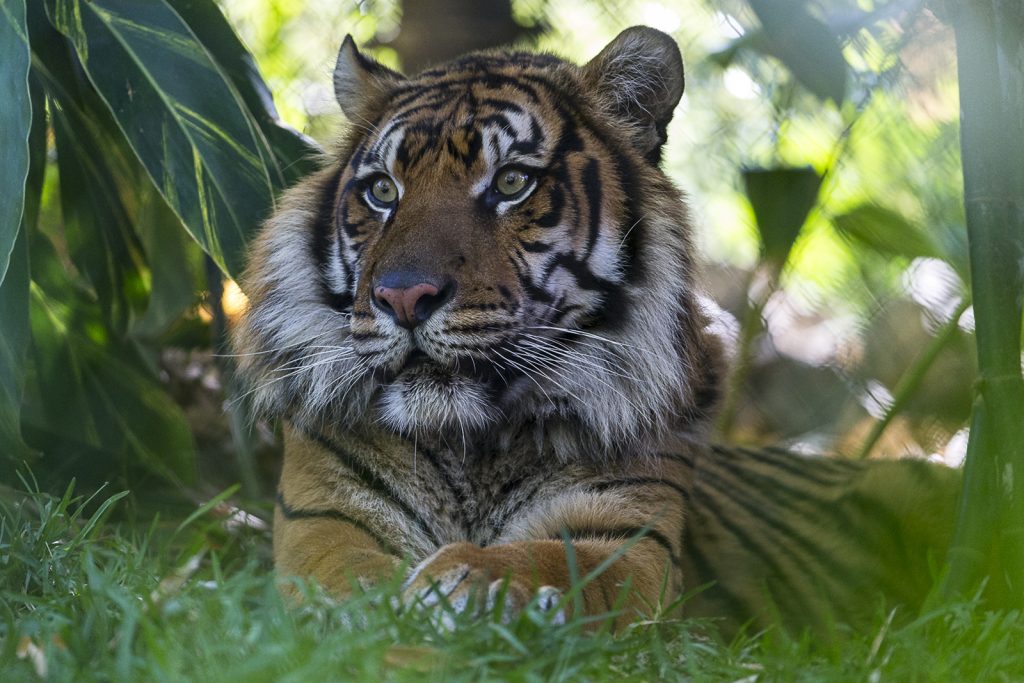
Teddy
Teddy continues to be calm and easy-going, making him a favorite of keepers and other tigers alike. Teddy enjoys daily howdies with all of the female and juvenile tigers—the house is filled with contented greeting sounds, called “chuffs,” when they see each other. Teddy is also very focused during training sessions and enjoys allspice essential oil and rabbit carcasses stuffed with beef heart.
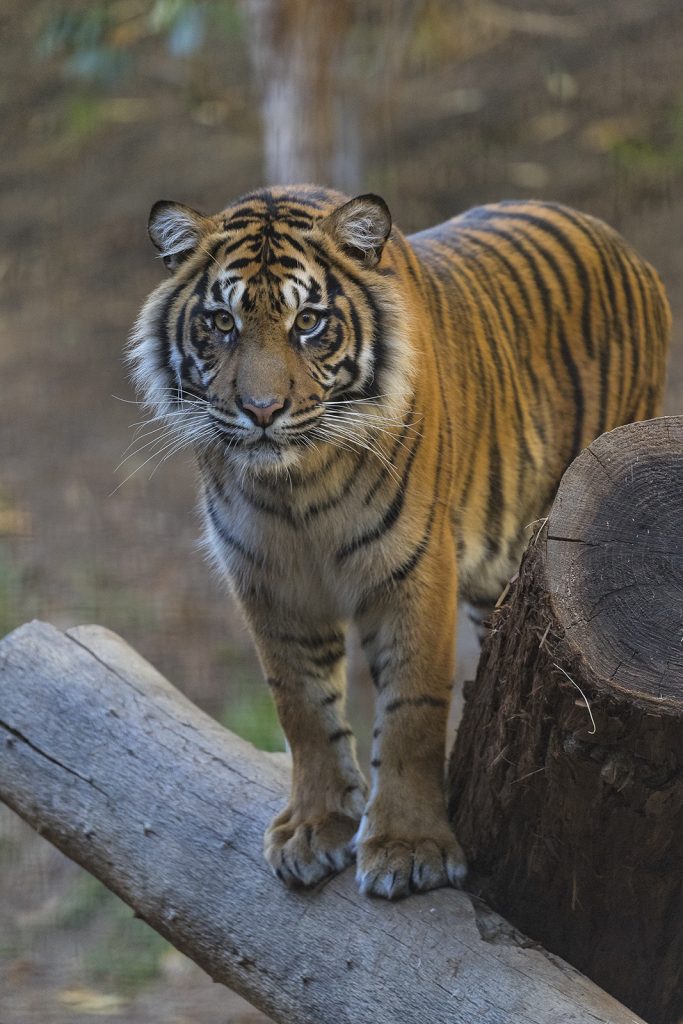
Cathy
Cathy and Debbie (pictured above the title) continue to live together, but are displaying signs that they may soon become sexually mature, solitary females. Both girls are very food motivated, and are quickly progressing through training with the keepers. These two ladies seem to have inherited their grandmother Delta’s feisty personality from her younger days.
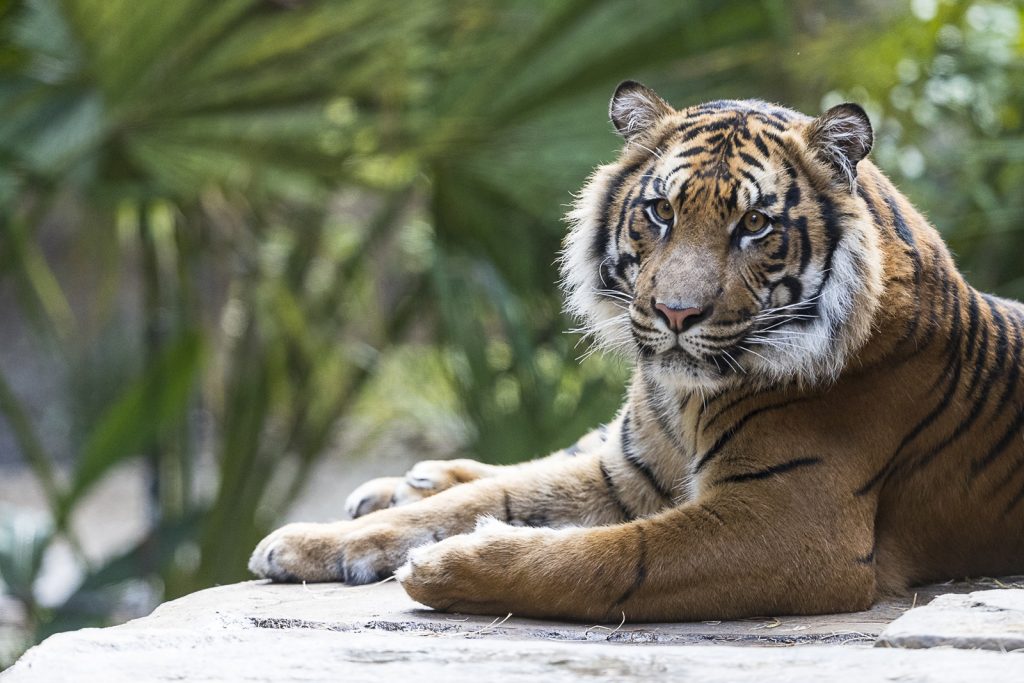
Suka
Suka and Nelson are the people-centric, “labradors” of Tiger Trail. These two males are getting huge—they each weigh over 240 pounds! Although we are starting to see signs of sexual maturity from both of them, they are still very bonded and are only separated from each other for feeding. Additionally, they have been great companions to Rakan and often howdy with him overnight.
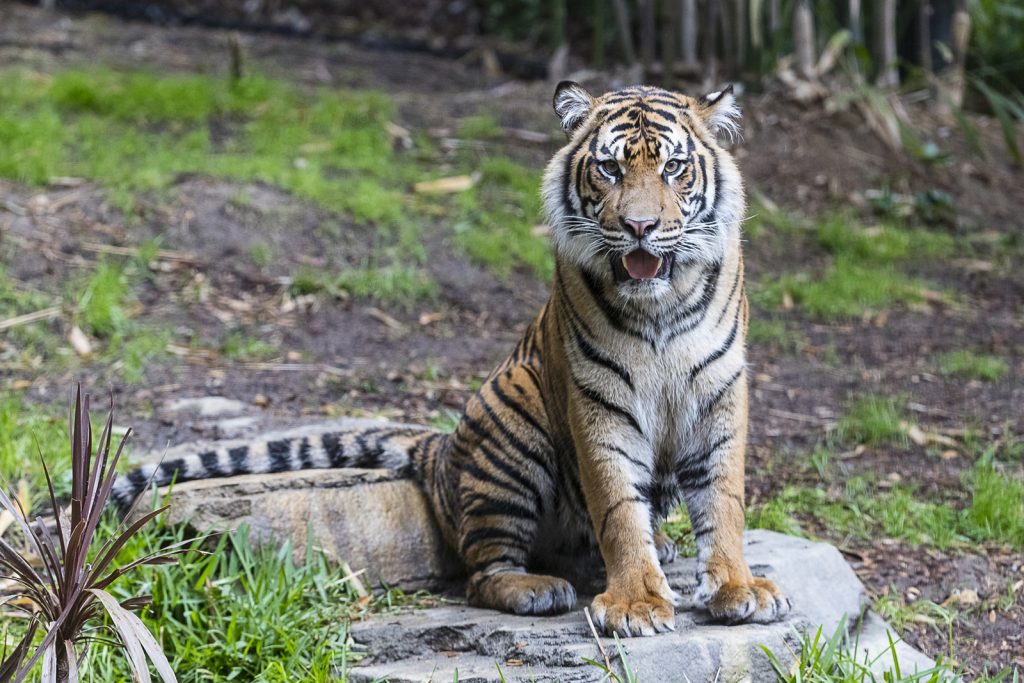
Nelson
Tigers face many challenges in the wild, including conflicts with humans and poaching. Tigers are killed by poachers who illegally sell tiger body parts, mostly for folk remedies. People can help protect wild tigers by refusing to purchase items made from endangered wildlife. However, the largest threat to wild tigers is habitat loss. Between 1990 and 2010, 37 percent of Sumatra’s primary forests were logged. Between 2000 and 2012, 17 percent of Sumatra was deforested. San Diego Zoo Global researcher Mathias Tobler says, “The erosion of large wilderness areas pushes Sumatran tigers one step closer to extinction. Safeguarding the remaining expanses of primary forests is now absolutely critical to ensuring that tigers can persist indefinitely on Sumatra.”
The main cause of deforestation on Sumatra is palm oil plantations. Palm oil is the most widely produced edible oil; over 44 million metric tons are produced in Indonesia and Malaysia per year. Palm oil is found in cosmetics, shampoo, toothpaste, and processed foods like chips and candy. However, palm oil can be produced sustainably. As a consumer, you can help save wild tiger habitat by choosing products labeled “RSPO”; this label is bestowed by The Roundtable on Sustainable Palm Oil, an organization formed to promote the growth and use of certified sustainable palm oil.
There are fewer than 400 Sumatran tigers remaining in the wild, and that number continues to drop. Scientists estimate that this species could be extinct in its native Sumatra by 2020, unless measures are taken to protect and preserve it. The San Diego Zoo Safari Park participates in a collaborative breeding program to create assurance populations of Sumatran tigers, and provides funding for anti-poaching patrols through the SSP’s Tiger Conservation Campaign. We hope you visit us at the Safari Park on Sunday, July 29th for Global Tiger Day to connect with our nine tigers, learn more about their behavior and natural history, and support our conservation efforts to save these amazing animals. But if a trip to the Park isn’t possible, you can watch the tiger enrichment on our live-streaming Tiger Cam beginning around 9 a.m. Our cam streams every day, so you start getting in a stripey state of mind by watching it now!
Elise Montanino is a keeper at the San Diego Zoo Safari Park. Read her previous blog, Older Gentleman Seeks Classy Lady.

